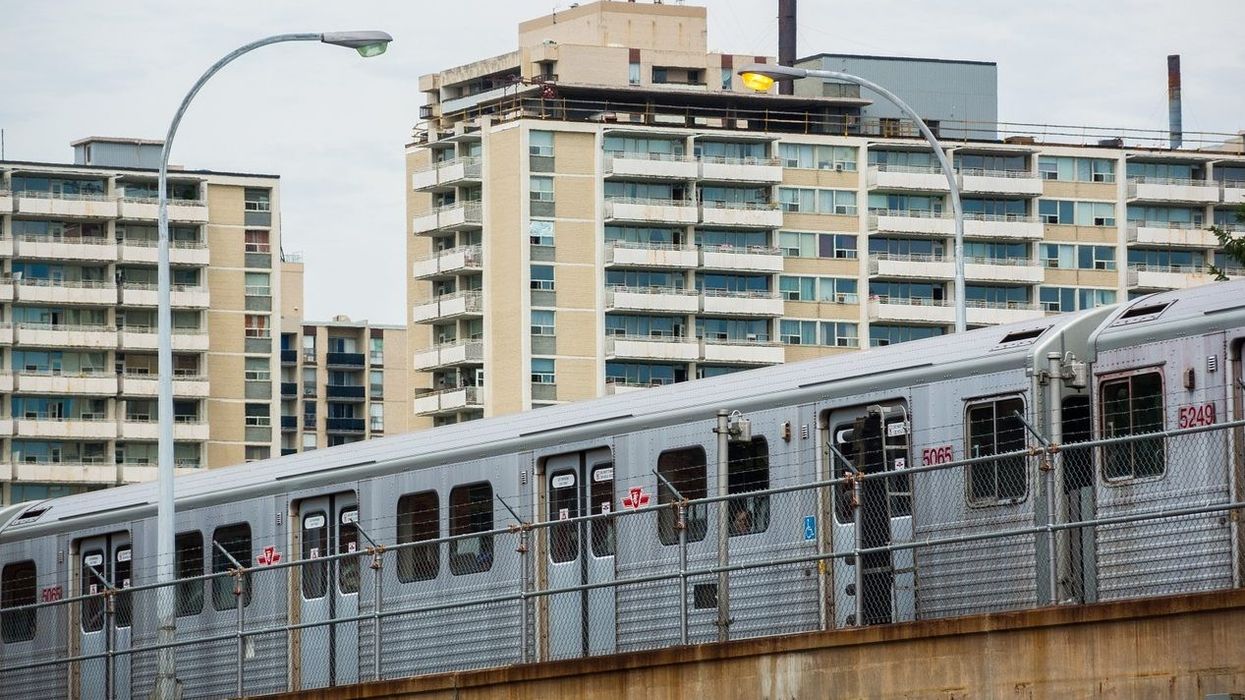The Greater Golden Horseshoe’s new comprehensive transit plan, unveiled last week by the provincial government, is a step toward solving the housing crisis because, where transit sprouts, developers follow.
The Greater Golden Horseshoe is expected to grow by 1M people every five years -- or 15M by 2051 -- according to the official transit plan, which will take 30 years to complete. In addition to the controversial Highway 13, the plan will establish a new corridor between Burlington and Oshawa using subways, LRTs and GO Rail, as well as creating a transit loop to the planned below-grade Ontario Line that will stretch as far north as Richmond Hill and include a stop at Pearson International Airport.
Sprawl is Still a Growing Issue
Ontario’s Places to Grow Act is turning 17 years old this year, but its ambitions are far from realized. Mandating intensification, the core tenet of which is building high-density housing in selected provincial hubs that are bolstered by elaborate transit networks to curtail urban sprawl -- nearly a decade ago, the Toronto Region Board of Trade estimated that $6B in annual productivity was lost in traffic gridlock, which it anticipates will billow to $15B in nine years -- but while there has been no shortage of cranes in Toronto’s skies, transit development hasn’t been nearly as active.
However, the entire plan miscalculated Canadians’ predilections for living in houses, whether semis or fully detached -- not to mention having backyards -- and, consequently, urban sprawl hasn’t much dissipated.
Granted, with both paltry urban transit and condominium square footage in Toronto, there hasn’t been much reason to resist the temptation of sprawling out of the urban core.
“To build more houses, you need more transit,” said Richard Lyall, President of the Residential Construction Council of Ontario. “On a per capita basis, we have the highest immigration targets within the G7, but amongst the G7, we have the lowest per capita housing, so this [transit plan] is good.”
The federal government recently increased its immigration targets to 1.3M between this year and 2024, and Lyall estimates that just under half of the country’s newcomers will settle in the Greater Golden Horseshoe because it’s Canada’s economic engine. Lyall’s supposition has merit -- in 2019, when Canada’s immigration target was roughly 300,000, 127,575 people moved to the GTA, outpacing Dallas-Fort Worth Arlington as the fastest growing metropolitan region on the continent that year.
“If you are going to increase your population, which is what we’re doing, how many of those 1.3M people will end up in the GTA? Probably 30-40%, and they need to live somewhere and they need mobility,” he said.
“We’re trying to encourage more public transit use, which is great, but in order to affect more public transit reliance, the service has to be really good, and that includes being able to access different parts of the GTA using that transit, and right now we need more of it.”
Highway 413, controversial though it may be, Lyall says, will succour east-west connectivity even further north than Hwy 407, but, unlike the latter, it will be toll-free, and he reminded that cars are nowhere near obsolescence.
Current Plan Built with Gaps
Drawn up in 2005, the Places to Grow Act overlooked the importance, perhaps even the necessity, of medium-density housing, says Ben Myers, President of Bullpen Research & Consulting.
Better known as the missing middle -- plexes, rowhouses and mid-rise condos -- the economies of scale don’t work, according to Myers. As an example, the cost of building a mid-rise condo in Toronto’s Junction neighbourhood is nearly on par with a downtown high-rise, ergo, why would developers even bother? Aside from an easier time securing site plan approvals, Myers can think of few other motivations.
“For a mid-rise product in the Junction at $1,300-1400 per sq. ft it is comparable to a downtown high-rise. It used to be two-thirds the price of a downtown high-rise. People do want that product, but for [developers] to do it, they have to charge these prices to get the same returns as they would on a downtown high-rise project,” Myers said.
But, as Christopher Alexander, President of RE/MAX, noted, few things are more auspicious to developers than new transit infrastructure. And where the economics of missing middle housing is murky, access to rapid transit infrastructure ameliorates developers’ profit margins and, resultantly, entices them.
“Developers always go where the dollars are, and public transit is what will do it, so it’s safe to say a mid-rise could work around [new transit infrastructure],” Alexander said. “Developers will follow the money and it’s usually around transit, and they have to be excited by the recent news.”





















